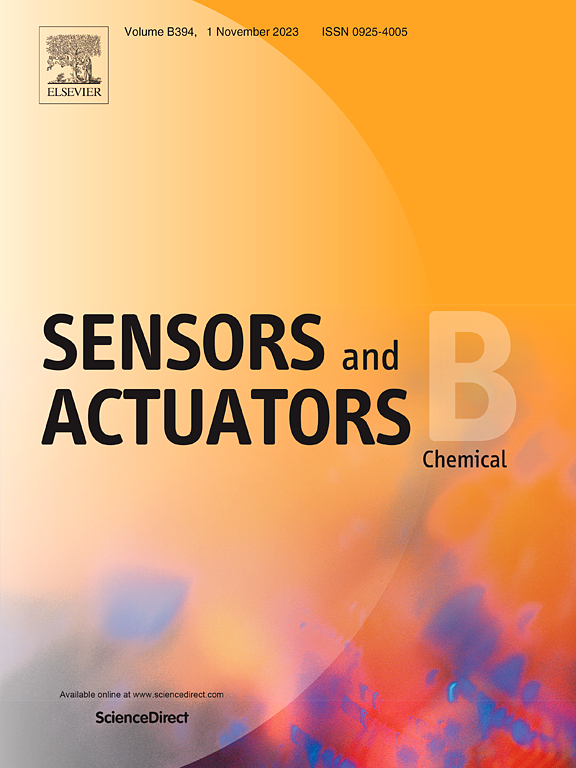同轴静电纺丝合成In2O3@Co3O4核壳纳米纤维对三乙胺的高效检测
IF 8
1区 化学
Q1 CHEMISTRY, ANALYTICAL
引用次数: 0
摘要
基于纳米结构和 p-n 异质结构在气体传感过程中的绝对优势和协同效应,本研究采用先进的同轴电纺工艺合成了 In2O3@Co3O4 核壳纳米纤维(CSNFs)。通过一系列表征测试,证实本研究合成的纳米纤维具有清晰的核壳结构和独特的异质界面。为了证明其在传感领域的应用价值,对其气体传感性能进行了系统研究。测试结果表明,In2O3@Co3O4 CSNFs 气体传感器对三乙胺(TEA)具有优异的选择性。在 120 ℃ 时,对 50 ppm TEA 的响应值达到 40.5,是纯 In2O3 纳米纤维的 13.5 倍。此外,该传感器还具有优异的重现性和快速响应恢复能力(7 秒/4 秒)。这主要得益于多孔核壳结构良好的渗透性和 p-n 异质结之间的电子传递。结合传感机理模型和密度泛函理论(DFT)计算,详细解释了 In2O3@Co3O4 CSNFs 的传感敏化机理。该研究为高性能传感器的设计和制备提供了有益的参考和启示,推动了传感器技术的发展和创新。本文章由计算机程序翻译,如有差异,请以英文原文为准。

Efficient detection of triethylamine by In2O3@Co3O4 core-shell nanofibers synthesized by coaxial electrospinning
Based on the absolute superiority and synergistic effect of nanostructures and p-n heterostructures in the gas sensing process, In2O3@Co3O4 core-shell nanofibers (CSNFs) were synthesized by the advanced coaxial electrospinning process. Through a series of characterization tests, it is confirmed that nanofibers with clear core-shell structure and unique heterogeneous interface have been synthesized in this study. In order to prove its application value in the field of sensing, its gas sensing performance was systematically studied. The test results show that the In2O3@Co3O4 CSNFs gas sensor has excellent selectivity for triethylamine (TEA). At 120 °C, the response value to 50 ppm TEA reached 40.5, which was 13.5 times that of pure In2O3 nanofibers. Additionally, the sensor has superior reproducibility and rapid response recovery ability (7 s/4 s). This is mainly because of the good permeability of the porous core-shell structure and the electron transfer between p-n heterojunctions. The sensing sensitization mechanism of In2O3@Co3O4 CSNFs is explained in detail by combining the sensing mechanism model and density functional theory (DFT) calculation. This study provides useful reference and inspiration for the design and preparation of high-performance sensors, and promotes the development and innovation of sensor technology.
求助全文
通过发布文献求助,成功后即可免费获取论文全文。
去求助
来源期刊

Sensors and Actuators B: Chemical
工程技术-电化学
CiteScore
14.60
自引率
11.90%
发文量
1776
审稿时长
3.2 months
期刊介绍:
Sensors & Actuators, B: Chemical is an international journal focused on the research and development of chemical transducers. It covers chemical sensors and biosensors, chemical actuators, and analytical microsystems. The journal is interdisciplinary, aiming to publish original works showcasing substantial advancements beyond the current state of the art in these fields, with practical applicability to solving meaningful analytical problems. Review articles are accepted by invitation from an Editor of the journal.
 求助内容:
求助内容: 应助结果提醒方式:
应助结果提醒方式:


